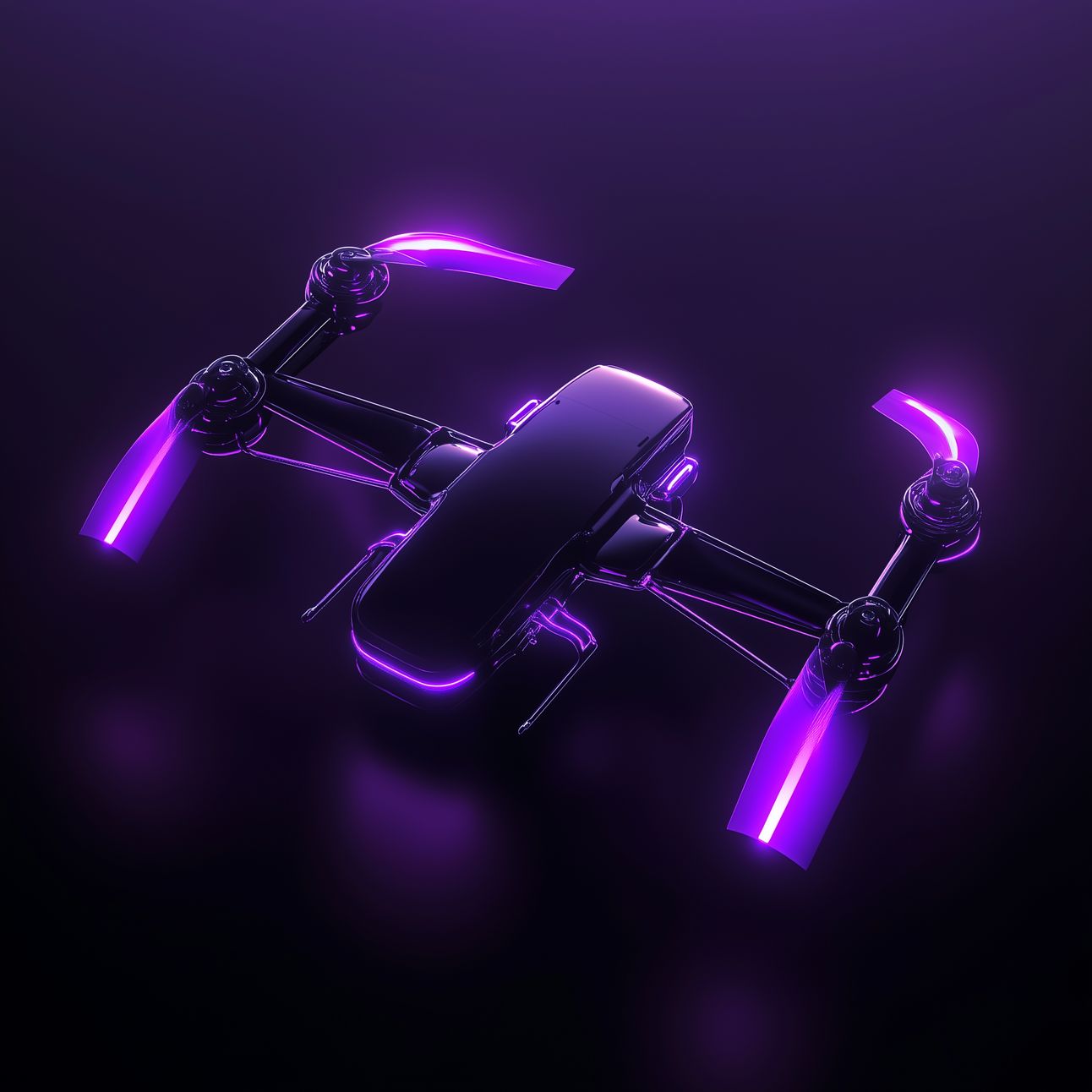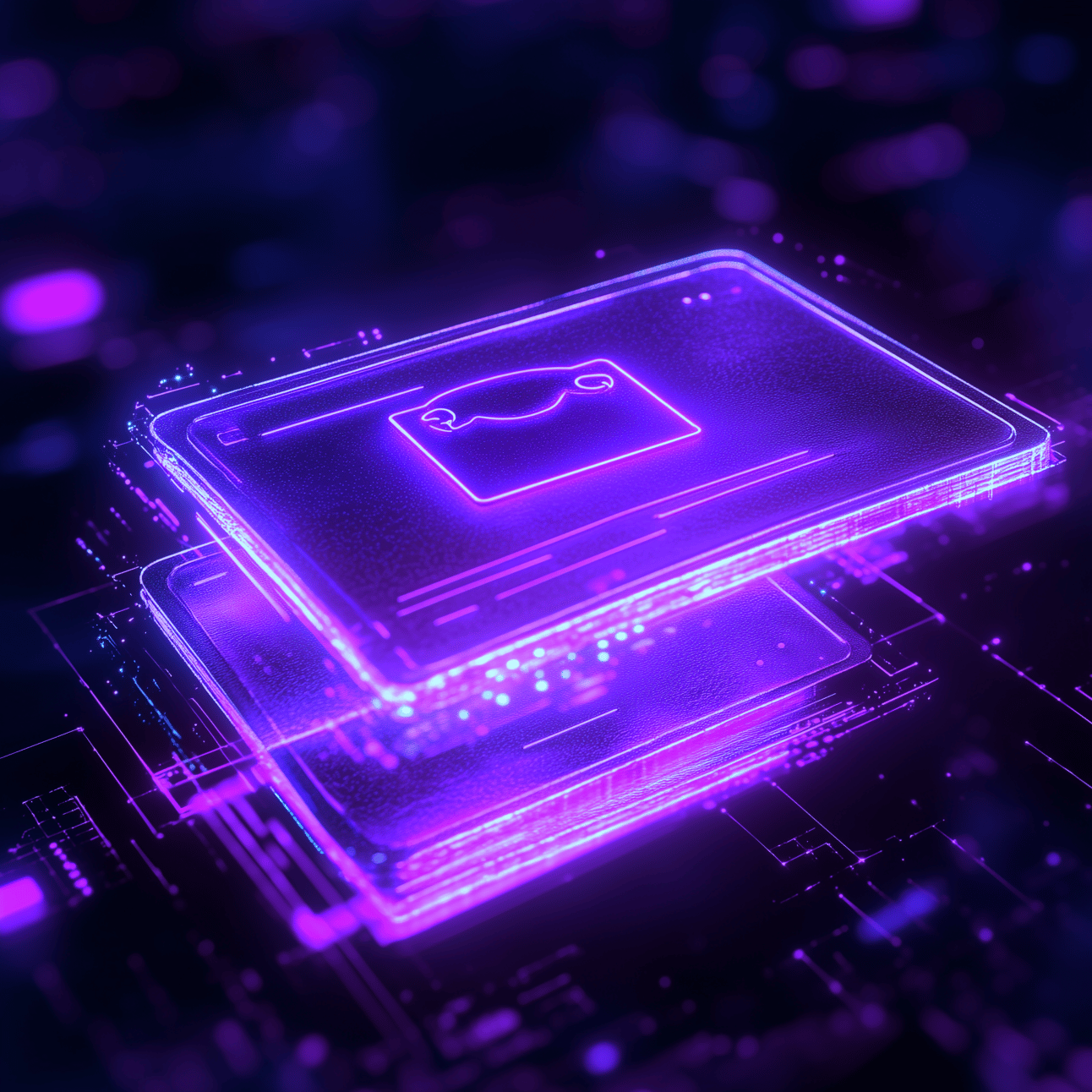- The Daily Qubit
- Posts
- The Daily Qubit
The Daily Qubit
🚁 Quantum learning for image processing in unmanned aerial vehicles, a quantum approach to optimize protein chromatography, the use of a Coherent Ising Machine to optimize community detection for fraud detection, and more.

Welcome to The Daily Qubit!
Get the latest in top quantum news and research Monday through Friday, summarized for quick reading so you stay informed without missing a qubit.
Have questions, feedback, or ideas? Fill out the survey at the end of the issue or email me directly at [email protected].
And remember—friends don’t let friends miss out on the quantum era. If you enjoy The Daily Qubit, pass it along to others who’d appreciate it too.
Happy reading and onward!
Cierra
Today’s issue includes:
Researchers developed a quantum learning approach for image processing in unmanned aerial vehicles to improve real-time data analysis.
Scientists have developed a quantum approach to sphere packing to optimize protein chromatography to improve protein separation for biopharmaceutical applications.
A team demonstrates the use of a Coherent Ising Machine to optimize community detection for fraud detection in banking.
QUANTUM APPLICATION HEADLINES

Image: by Midjourney for The Daily Qubit
APPLICATION: Researchers from Igor Sikorsky Kyiv Polytechnic Institute developed a layer-by-layer learning approach for image processing in unmanned aerial vehicles that integrates quantum machine learning methods to improve real-time data analysis as well as improve computer vision tasks such as object detection, mapping, and environmental monitoring.
SIGNIFICANCE: UAVs often operate in resource-constrained environments but require highly efficient and accurate image processing systems. This study highlights the potential of quantum machine learning, specifically tensor networks, to improve these capabilities. By integrating quantum circuits and layer-by-layer learning, the model achieves improved accuracy and reduced computational demands to address critical challenges in UAV operations.
HOW: The proposed method divides a tensor network-based quantum machine learning model into layers, with each layer handling specific functions in the image processing pipeline. Training starts with the first layer, which is optimized and then frozen before moving on to subsequent layers. This incremental approach allows for a more focused and efficient training process. Additionally, the study introduces an analytical gradient computation for tensor network layers, significantly reducing the reliance on the slower parameter shift rule. The experiments were conducted using a subset of the MNIST dataset resized to 16x16 pixels, with the model trained and tested on balanced samples of 70 and 30 images, respectively. This new method outperformed the traditional parameter shift rule, achieving a 3x reduction in training time and improved accuracy (0.6 vs. 0.47), showing its potential to improve performance in resource-constrained environments.
BY THE NUMBERS:
3x – The reduction in training time compared to traditional methods while improving accuracy.
900 – The number of iterations performed using the new algorithm to achieve a balanced training process.
16x16 pixels – Resolution to which MNIST dataset images were resized for the experiment.

Image: by Midjourney for The Daily Qubit
APPLICATION: Scientists from Infleqtion and CSL Behring have developed a quantum approach to sphere packing to optimize protein chromatography. This process models the packing of spherical gels in filtration columns used in biopharmaceutical manufacturing in order to improve protein separation and operational efficiency.
SIGNIFICANCE: Protein chromatography is one step in producing high-purity biopharmaceuticals, where protein mixtures are filtered through tightly packed columns to separate and isolate target proteins based on their physical or chemical properties. The tight packing of spherical gels increases protein separation, which is computationally challenging due to its exponential complexity. By using quantum computing and the quantum approximate optimization algorithm, this research serves as an example for quantum computing applied to this particular NP-hard problem, with implications for biopharmaceutical efficiency and product yield.
HOW: The study models three levels of packing complexity: homogeneous circle packing, heterogeneous circle packing, and heterogeneous sphere packing. Homogeneous packing was tested on IQM's Garnet quantum computer using QAOA, demonstrating its ability to solve bounded circle packing through hyperparameter optimization and noisy simulations to maximize the probability of optimal configurations. Packing density, which measures the fraction of available space filled by the packed spheres or circles to evaluate space utilization efficiency, was a key metric in the experiment. The QAOA implementation achieved a packing density of 0.68 on the Garnet quantum computer, compared to the theoretical optimal density of 0.74 for 12 circles within a boundary circle of radius 4.02.
BY THE NUMBERS:
3 complexity levels – Modeled packing types: homogeneous circle, heterogeneous circle, and heterogeneous sphere packing.
0.68 packing density – Achieved for homogeneous circle packing in quantum hardware experiments, as compared to the optimal 0.74.
3 QAOA layers – Optimal depth for achieving the best balance between circuit expressivity and noise levels in the experiment.

Image: by Midjourney for The Daily Qubit
APPLICATION: A team from Longying Zhida Technology and Beijing QBoson Quantum Technology demonstrates the use of a Coherent Ising Machine (CIM to optimize community detection for fraud detection in banking.
SIGNIFICANCE: As fraud becomes increasingly sophisticated, traditional methods struggle to detect hidden patterns in massive financial transaction datasets. Quantum computing offers a path to process these networks faster and with greater accuracy, pinpointing high-risk groups that evade conventional detection. This study's integration of CIM technology provides a practical framework to uncover fraud networks more effectively, laying the groundwork for enhanced financial security.
HOW: The researchers modeled transaction data from a commercial bank as a graph, where nodes represented accounts and edges represented transactions. The dataset was refined through a denoising process to remove low-risk and irrelevant nodes, resulting in a focused dataset of 308 accounts. Using the Coherent Ising Machine, they optimized the modularity function—a measure of community structure—by framing the problem as a quadratic unconstrained binary optimization model to allow the CIM to identify communities within the network that were densely connected and potentially fraudulent. The CIM’s performance was compared to classical algorithms like Louvain and simulated annealing and showed improved speed. Additionally, the CIM achieved better identification of high-risk communities, containing the majority of fraudulent accounts.
BY THE NUMBERS:
308 nodes, 19 fraudulent accounts – The dataset after denoising, with a fraud prevalence of 6.17%.
70% – Proportion of fraudulent accounts identified within a high-risk community.
∼1 ms – CIM’s time to solution, outpacing Louvain (~10 ms) and SA (~105 ms).
2 precisions tested – The CIM operated under 8-bit and 14-bit precisions, with both said to outperform classical methods.
There’s a reason 400,000 professionals read this daily.
Join The AI Report, trusted by 400,000+ professionals at Google, Microsoft, and OpenAI. Get daily insights, tools, and strategies to master practical AI skills that drive results.
RESEARCH HIGHLIGHTS
🧠 Researchers from Stellenbosch University introduce a quantum leaky integrate-and-fire spiking neuron, a biologically inspired model implemented with minimal quantum resources to address limitations in classical and quantum machine learning. By using noise as a functional feature, the QLIF neuron and its networks efficiently classify image datasets like MNIST, outperforming traditional quantum models in speed while maintaining competitive accuracy.
🖼️ A team from TRUMPF SE + Co. KG and Fraunhofer IAO compares the performance of classical, quantum, and hybrid quantum-classical neural networks for binary image classification tasks across datasets of varying complexity, including artificial hypercube data, MNIST digits, and real-world industrial images. The study highlights that while quantum models achieve competitive accuracy, they do not consistently outperform classical approaches but exhibit advantages in model expressivity and parameter robustness.
🌐 Scientists from the Vienna Center for Quantum Science and Technology and the University of Geneva present a method to verify quantum coherence in network scenarios without altering input settings, unlike traditional experiments like the double-slit. Using a triangular network with independent quantum sources, the researchers demonstrate that quantum coherence creates correlations unattainable by classical means, derived through nonlinear inequalities.
NEWS QUICK BYTES
🤝 AWS and NVIDIA have partnered to integrate NVIDIA's CUDA-Q platform into Amazon Braket, providing researchers access to powerful GPU-based simulators, like CUDA-Q, for testing quantum algorithms, while also supporting deployment on quantum hardware from IonQ, Rigetti, and others via Braket. The overall goal of this partnership is to accelerate research and lower infrastructure barriers, supporting the development of next-generation quantum technologies.
💾 IonQ has launched its IonQ Quantum OS, a redesigned operating system for quantum computing, alongside the IonQ Hybrid Services suite to enhance enterprise quantum applications. The Quantum OS improves time-to-solution with features like a 50% reduction in classical overhead, 85% faster cloud operations, up to 100x better error mitigation, and enhanced calibration for algorithm performance. The Hybrid Services suite integrates IonQ’s quantum computers with high-performance classical resources, offering tools like the Workload Management & Solver Service and expanded scheduling features to streamline hybrid workloads.
💰️ The NQCC, in partnership with STFC and UKRI, launched the SparQ Proof of Concept Call in July 2024, awarding grants of up to £75,000 for early-stage quantum projects in healthcare, energy, and logistics. Selected projects, running through March 2025, tackle real-world challenges such as cancer detection, renewable energy optimization, fraud detection, and aerospace applications, with contributors including Oxford Ionics, Quantinuum, and Mind Foundry.
🕰️ Infleqtion has secured $11 million from the U.S. Department of Defense through the APFIT program to advance its Rack Mounted Optical Clocks project, featuring the Tiqker optical clock for precision timing. Leveraging quantum technology, Tiqker provides reliable timing solutions for GPS-denied navigation, secure communications, and anti-spoofing, relevant for military operations in contested environments.
🖥️ Chungbuk National University has acquired South Korea's first full-stack quantum computer, the 5-qubit IQM Spark. Scheduled for installation in early 2025, the system marks a milestone as the first quantum computer procured through South Korea’s government process and highlights collaboration between IQM and CBNU to prepare students for the quantum workforce.
✨ The Jülich Supercomputing Centre has received a 100-qubit quantum computer from Pasqal, integrating it with the JURECA DC supercomputer as part of the EuroHPC JU project HPCQS. This initiative intends to establish a hybrid quantum-HPC infrastructure across Europe, addressing challenges like drug design and supply chain optimization while strengthening Europe's quantum ecosystem.
🎉 Seven businesses, including BAE Systems, Vodafone, and startups like SIMULEX, have joined Digital Catapult's Quantum Technology Access Programme to advance quantum computing applications in transport, defense, and telecommunications. Part of the Innovate UK-funded ‘Quantum Data Centre of the Future’ project, the initiative explores embedding quantum into classical data centers to tackle challenges like the NP-Hard Steiner Tree problem, optimizing telecom networks, and advancing sustainability.
💵 The Albanese Government is investing over AUD $60 million (approximately $39 million) through the Advanced Strategic Capabilities Accelerator's Emerging and Disruptive Technologies program to advance quantum and counter-disinformation technologies aligned with Australia's defense priorities. The program has signed 21 contracts with universities and industry, including Q-CTRL for quantum hardware and Nomad Atomics for quantum sensors, to strengthen the nation's defense innovation ecosystem.
QUANTUM MEDIA
LISTEN
On the most recent episode of the Superpostion Guy’s podcast, host Yuval Boger, Chief Commercial Officer of QuEra, is joined by Tony Cubitt, co-founder, CTO, and Chief Science Officer of Phasecraft. They discuss Phasecraft’s approach to bridging the gap between quantum demonstrations and useful applications, the role of hybrid quantum-classical algorithms in accelerating materials science, the importance of optimizing for specific hardware platforms, and the critical need for higher gate fidelities in quantum computing.
THAT’S A WRAP.
How many qubits was today's newsletter? |


